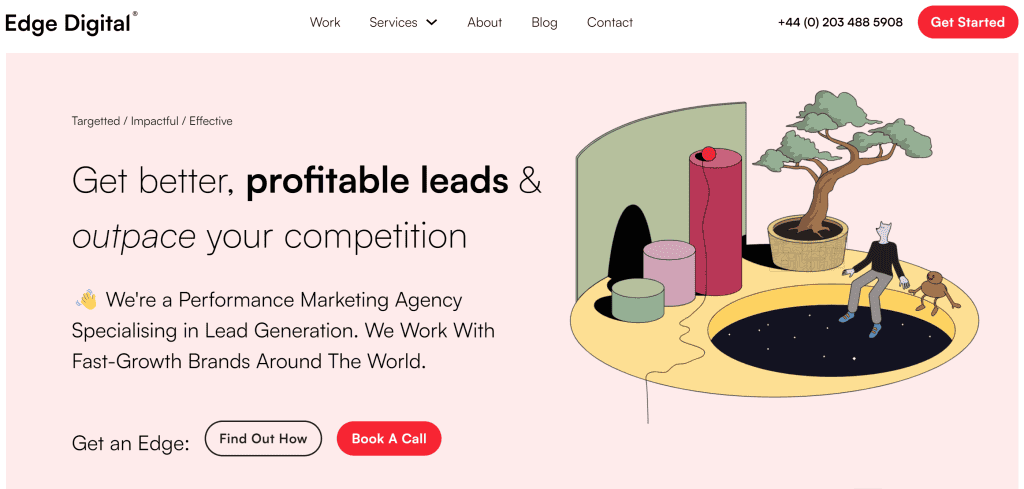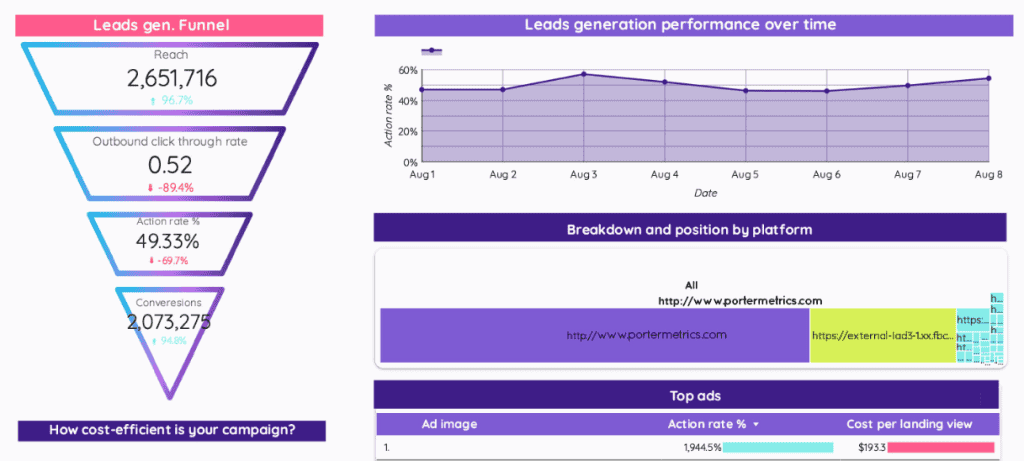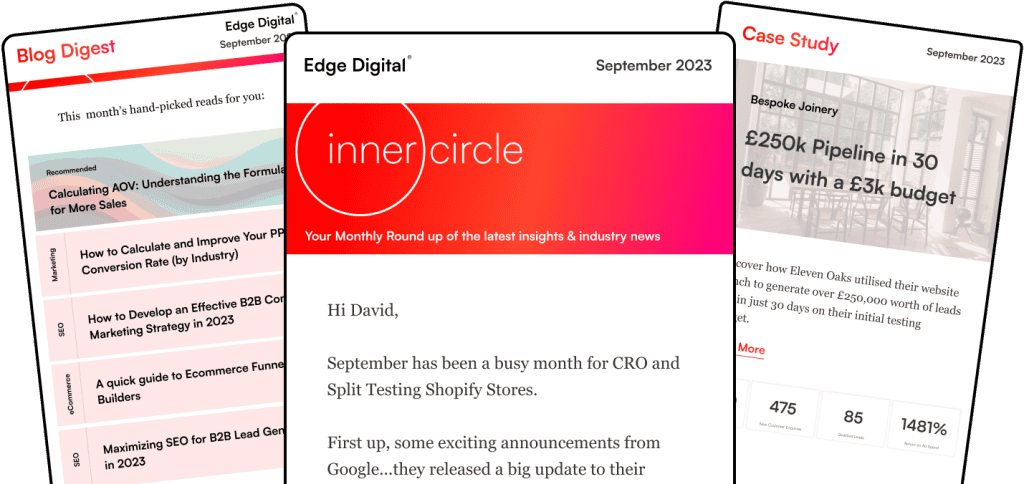Paid search analysis is a crucial component of digital marketing. It allows businesses to evaluate and fine-tune their paid advertising efforts. By analysing data and metrics, we can pinpoint what works and what doesn’t, ultimately improving our PPC strategy.
This process ensures that our campaigns are cost-effective and reach the intended audience efficiently.
Our goal with paid search analysis is to maximise return on investment (ROI) by understanding which keywords, ads, and landing pages perform best. This involves segmenting data by various factors such as time, location, and device type.
Using this information, we can make informed decisions that align with our business objectives and market conditions.
Beyond the basics, advanced techniques in paid search analysis cover budget management, user behaviour, and technical aspects. By continuously tracking and reporting our performance, we maintain a dynamic and adaptive advertising strategy that supports long-term success.

Digital marketing paid analysis=maximised ROI
Key Takeaways
Paid search analysis helps improve PPC strategy and ROI.
Understanding performance metrics guides better decision-making.
Advanced techniques include budgeting and analysing user behaviour.
Understanding Paid Search
Paid search is a critical part of digital marketing that offers businesses the chance to place their ads in strategic positions in search engine results. We’ll look into what paid search is, the role it plays, and the key elements of a successful paid search campaign.
Defining Paid Search and PPC
Paid search refers to a model where businesses bid for ad placements on search engine result pages (SERPs). This model is best known as pay-per-click (PPC), where advertisers pay only when someone clicks on their ad. Paid search marketing includes running PPC campaigns on platforms like Google Ads.
There are several types of PPC ads, including search ads, display ads, and shopping ads. Most recognisable are Google Ads, which allow businesses to bid on keywords that users might search for. It’s a highly targeted approach that ensures ads are seen by people who are actively searching for related products or services.
The Role of Paid Search in Digital Marketing
Paid search plays a vital role in digital marketing due to its ability to drive immediate traffic and generate leads. Unlike organic search, which can take months to yield results, paid search can produce quick outcomes.
It enables our ads to appear at the top of search results, increasing visibility and click-through rates.
Paid search also provides measurable data, letting us evaluate ad performance with metrics such as impressions, clicks, and conversions. This makes it easier to optimise campaigns for better returns.
Furthermore, the use of targeted keywords ensures our ads reach the relevant audience, enhancing the efficiency of our marketing efforts.
Key Components of Paid Search Campaigns
Several critical components must be managed effectively for a successful paid search campaign:
Budget Management – Deciding on a budget and monitoring spending is essential. It’s important to start with a pilot campaign to test and adjust as necessary.
Keyword Research – Identifying the right keywords that our potential customers use ensures that our ads are seen by the right audience. Organizing these keywords into ad groups helps in analyzing and optimizing campaign performance.
Ad Quality – Crafting compelling ad copy that is relevant to our keywords and audience can significantly impact the performance and quality score assigned by search engines like Google.
Landing Page Optimisation – Ensuring that our landing pages are user-friendly and relevant to the ad increases the chances of conversion.
Fundamentals of Paid Search Analysis
Paid search analysis helps us measure campaign effectiveness, track vital metrics, and optimise for better performance. It’s crucial for understanding how our efforts translate into clicks, conversions, and overall success.
Importance of Paid Search Analysis
Paid search analysis is vital because it allows us to understand the effectiveness of our advertisements. By examining data and metrics, we can see what works and what doesn’t in our paid search ads.
This analysis helps us allocate our budget more effectively. We can identify which keywords and ads generate the most clicks and conversions. It also helps us stay competitive by constantly adapting and improving our strategies.
Metrics and KPIs to Track
Tracking the right metrics is essential for successful paid search campaigns. Key Performance Indicators (KPIs) include click-through rate (CTR), cost per click (CPC), and conversion rate.
CTR measures the percentage of people who click on our ads. CPC tells us how much we spend for each click. Finally, the conversion rate shows the percentage of clicks that result in desired actions, like purchases or sign-ups.
Understanding Campaign Performance
Understanding campaign performance involves looking at how our ads perform over time. We need to regularly review and analyse data to spot trends and make informed decisions.
We need to compare performance across different keywords, ads, and demographics. Identifying competitors who are bidding on the same keywords is crucial to understand market competition and gain insights into key rivals. This helps us see where we achieve the best results and where there’s room for improvement.
Effective optimisation comes from continuous analysis and adjustment. By understanding our campaign performance, we ensure our advertising efforts lead to better results.

Understanding how to track and optimize performance
Optimising Your Paid Search Strategy
To get the best out of your PPC campaigns, focus on thorough keyword research and analysis, impactful ad copy and messaging, and effective landing page improvements.
Keyword Research and Analysis
We start by identifying the right keywords. This involves tools such as Google Ads and Google Analytics. Keywords should align with our target audience’s search queries.
Using long-tail keywords can help us reach more specific segments of our market. It’s crucial to analyse keyword performance regularly.
Tracking metrics like click-through rates (CTR) and conversion rates can guide us in refining our keyword list. A mix of both high-volume and niche keywords ensures we capture varied search intents.
Ad Copy and Messaging
Creating compelling ad copy is essential. Our messaging should be clear, concise, and targeted. Highlighting unique selling points, promotions, or benefits can draw users in.
Including keywords in the ad copy can also boost relevancy scores and improve ad placement.
We can utilise A/B testing to determine which messages resonate most with the audience.
Regularly updating and testing new ad copy keeps our campaigns fresh and engaging. Calls to action (CTAs) should be direct and enticing, prompting users to click and convert.
Landing Page Improvement
The landing page experience is just as important as the ad itself. Ensuring that the landing page is relevant to the ad can improve user experience and increase conversion rates.
The page should load quickly, as slow pages can lead to high bounce rates.
Content on the landing page must be engaging and aligned with the ad’s promise. Clear headings, engaging visuals, and a straightforward layout help users navigate the page easily.
Including CTAs that stand out on the page ensures users know exactly what action to take next.

A successful landing page should have one value proposition, one clear message
Advanced Techniques in Paid Search Analysis
In our exploration of advanced paid search analysis, we dive into methods like competitor analysis, the use of AI and machine learning, and predictive analysis. These approaches help us refine our strategies and achieve better PPC outcomes.
Competitor Analysis and Market Positioning
Analysing our competitors allows us to understand their tactics and identify gaps in the market. By examining competitor keywords, ad copy, and performance, we can uncover opportunities to improve our own campaigns.
For competitor analysis, tools like SEMrush and Ahrefs are pivotal. They provide insights into competitors’ keyword strategies and ad spend. Additionally, using tools like AdGooroo and Semrush to monitor branded PPC keyword trends is crucial. This helps us understand different types of competition, including non-approved trademark users and resellers, and allows us to run direct channel activity comparisons to gain insights.
This helps us position our brand more effectively within the competitive landscape.
Furthermore, understanding market positioning allows us to tailor our ads to target audience preferences, which can lead to higher click-through rates and conversions.
We must regularly update our analysis to stay abreast of industry trends and adjust our tactics accordingly.
Utilising AI and Machine Learning in PPC
Incorporating AI and machine learning into our PPC strategies can transform how we manage and optimise campaigns.
AI can help us automate bidding, improving efficiency and lowering costs. Machine learning algorithms analyse vast amounts of data to predict which ads will perform best.
We can use AI-driven tools like Google’s Smart Bidding and Adobe Advertising Cloud. These tools adjust bids in real time based on a variety of factors, from user behaviour to industry trends, optimising for conversions or other desired outcomes.
AI also enables advanced audience segmentation, personalising ad content for different user groups. This targeted approach ensures our ads resonate more with each segment, increasing engagement and return on investment.
Predictive Analysis and Opportunity Identification
Predictive analysis leverages historical data to forecast future trends and identify potential opportunities.
By analysing past campaign performance, we can predict which keywords and ad copies will yield the best results. Predictive analysis can also help optimize paid search marketing campaigns by forecasting keyword performance.
Using tools like Google Analytics and Python, we can create models that simulate different scenarios. These models help us anticipate changes in market dynamics and adjust our strategies proactively.
Predictive analysis also assists in budget allocation, ensuring we invest in areas with the highest potential returns.
By continuously monitoring and refining our predictions, we can stay ahead of the competition and capitalise on emerging trends.
Budgeting and Financial Aspects
Effective budgeting in paid search is crucial for maximising returns on investment (ROI) and ensuring your financial resources are used efficiently.
Key aspects include how to allocate your budget, strategies to optimise it, and ways to boost your financial returns.
Effective Budget Allocation
Allocating your budget effectively is the first step in a successful paid search campaign.
Start by defining clear objectives and determining the amount you are willing to spend.
Calculate the lifetime value of your customers to decide how much you can afford to spend on acquiring each customer.
For example, if you wish to generate £100k in new business, and the average customer lifetime value is £25k, you will need to make 4 sales.
Research your keywords and prioritise those with the highest potential returns.
Then, adjust your budget based on performance data to ensure that high-converting keywords receive more ad spend.
Using tools like Google Ads can help automate and manage your budget allocation.
Budget Optimisation Strategies
Optimising your budget involves continuous analysis and adjustment to ensure maximum effectiveness.
Regularly review metrics such as cost per acquisition (CPA) and return on ad spend (ROAS).
If you notice that a specific campaign or keyword is underperforming, reallocate the budget to more profitable areas.
Consider using tools and software that offer automated bid adjustments and budget recommendations.
This can save time and help maintain optimal ad performance.
A/B testing different ad copies and landing pages can also offer insights into what works best, allowing for fine-tuning your budget.
Maximising ROI and Financial Returns
To maximise ROI and financial returns, focus on the quality of your ads and their relevance to your target audience.
High-quality, well-targeted ads can lead to higher click-through rates (CTR) and conversion rates, which are essential for improving ROI.
Investing in thorough keyword research and continually optimising for high-performing keywords will ensure that your ad spend is used efficiently.
Monitoring performance metrics helps in making informed decisions about where to increase or decrease spending.
For instance, if a campaign shows a high cost per acquisition, it might be less profitable and require budget adjustments.
Analysing and Influencing User Behaviour
Understanding and influencing user behaviour in paid search is crucial for boosting engagement and maximising conversions.

Microsoft Clarity is an excellent tool that helps identify user behaviours on your website
We need to closely track various engagement metrics, adapt to changing search patterns, and consider the implications of geographic and temporal factors to achieve the best results.
Tracking User Engagement and Demographics
Tracking user engagement involves monitoring interactions such as clicks, page views, and conversions.
By examining these metrics, we can identify how users interact with ads and websites.
For example, tools like Google Analytics offer insights into which pages are most visited and how long visitors stay on each page.
Demographic data, including age, gender, and interests, helps us tailor our campaigns to better reach our target audience.
By integrating demographic analysis with engagement tracking, we can refine our messaging and targeting strategies.
Understanding which demographics engage most with certain types of content helps in creating more appealing and effective ads.
Adapting to Consumer Search Patterns
Consumer search patterns reveal how and when people search for products or services.
These patterns can shift due to trends, seasons, or events.
By regularly analysing search terms and adjusting keywords, we can stay relevant and maintain high visibility in search results.
Using frameworks like the Hooked Model or Flow Theory allows us to understand the motivations behind user searches.
This insight helps us create more engaging and appealing campaigns.
Keeping a pulse on these patterns ensures that our ads resonate with users’ current needs and preferences.
Impact of Geographic Location and Time of Day
Geographic location significantly impacts user behaviour. Different regions may have distinct preferences and responses to advertisements.
For example, what works in one country may not be effective in another.
By segmenting our campaigns based on geographic data, we can target ads more precisely and increase relevance.
The time of day also plays a crucial role. User activity varies throughout the day, and understanding these patterns helps us schedule ads for optimal times.
For instance, running ads during peak hours when users are most active can lead to higher engagement and conversion rates.
Analysing time-of-day patterns ensures that our ads reach users at the most opportune moments.
Technical Aspects of Paid Search
Paid search analysis involves several key technical components that are crucial for optimising our advertising campaigns.
We need to focus on quality score, ad placement, and cost-per-click (CPC) while understanding search engine algorithms and bidding strategies.
Quality Score and Ad Placement
Quality score is a key factor in determining the placement of our ads on the search engine results page.
Search engines like Google assign a score from 1 to 10 based on the relevancy of our keywords, the quality of our ads, and the landing page experience.
A higher quality score can lead to better ad placement and lower CPC.
Factors affecting quality score:
Relevance: How closely our ad matches the user’s search terms.
Ad quality: The effectiveness and clarity of our ad text.
Landing page experience: The user-friendliness and relevance of our landing page.
Impact of quality score:
Better positions: High quality scores can help our ads appear at the top of search results.
Lower costs: With a high quality score, we might pay less for each click.
Bidding Strategies and Cost-per-Click
Effective bidding strategies are essential to control our advertising spend and achieve our campaign goals.
CPC is the amount we pay each time someone clicks on our ad.

We can choose different bidding strategies based on our objectives, such as maximising clicks or targeting a specific CPC.
Common bidding strategies:
Manual CPC: We set a maximum cost we’re willing to pay for each click.
Enhanced CPC: This strategy adjusts bids based on the likelihood of a conversion.
Target CPA: We set a target cost per acquisition, and the bidding system adjusts to meet this target.
Managing CPC:
Budget control: Effective bidding helps us stay within our budget.
Performance tracking: Regular analysis helps us adjust bids to improve campaign performance.
Interpreting Search Engine Algorithms
Understanding how search engines rank and display ads is critical for our success.
Search engine algorithms consider multiple factors, including quality score, bid amount, and user behaviour, to determine ad placement.
Factors affecting search engine rankings:
User engagement: Click-through rates and other user interactions.
Content relevance: The alignment of our ad content with search queries.
Ad extensions: Using ad extensions can improve visibility and engagement.
Optimising for algorithms:
Continuous improvement: Regularly updating our ads and keywords based on performance data.
A/B testing: Trying different ad versions to see which performs best.
Tracking and Reporting
Understanding how to track and report on paid search campaigns is crucial for assessing performance and optimising strategies.
By utilising specific tools and methods, we can ensure our campaigns are efficient and effective.

Google’s Looker Studio is a very useful data visualisation and reporting tool we use in house as part of our Analytics stack
Utilising Google Analytics and Similar Tools
Tracking the performance of our paid search campaigns begins with the right tools.
Google Analytics, for example, allows us to measure key performance indicators (KPIs) such as click-through rates (CTR) and conversion rates.
By integrating Google Analytics with AdWords, we can gain a deeper understanding of user behaviour.
Similar tools like SimilarWeb also provide insights into user engagement and competitor performance, helping us refine our marketing strategy.
Reporting for Stakeholders
Once data is collected, it needs to be presented to stakeholders in a clear and concise manner.
Regular reports should include essential metrics like cost per click (CPC), conversion rates, and quality scores.
Using tools such as dashboards can simplify this process, providing real-time updates and visualisations.
Effective reporting helps stakeholders understand the impact of our campaigns and supports decision-making.
Leveraging Data for Marketing Analysis
Analysing the data collected from tracking systems allows us to optimise our marketing strategies.
We focus on metrics like CTR, CPC, and conversion rates to identify trends and areas for improvement.
By leveraging data, we can fine-tune our ad copy, targeting, and budget allocation.
This continuous analysis and adjustment ensure that our paid search campaigns are cost-effective and generate the desired outcomes.
Frequently Asked Questions
We have compiled answers to some of the most common questions about paid search analysis. These questions cover effective templates, performance metrics, and useful tools.
How can one create an effective paid search analysis template?
To create an effective template, start with key metrics like click-through rate (CTR), cost per click (CPC), and conversion rate.
Include sections for keyword performance and ad copy analysis.
Using Excel or Google Sheets can help in organising these elements efficiently.
What constitutes a good example of a paid search analysis?
A good analysis includes detailed insights on keyword performance, ad copy effectiveness, and budget allocation.
It clearly shows which strategies are working and which need adjustments. Detailed charts and graphs can make the data more understandable and actionable.
In what ways does paid search advertising differ from organic search strategies?
Paid search advertising involves paying for ad placements, often based on keywords, while organic search relies on SEO techniques to rank in search engine results.
Paid search can deliver immediate traffic, whereas organic strategies may take longer to produce results but are cost-free.
What are the essential metrics for measuring the performance of paid search campaigns?
Key metrics include CTR, CPC, conversion rate, return on ad spend (ROAS), and impressions.
These metrics help us understand the effectiveness of our ads and keywords, and guide our decisions on budget allocation and strategy adjustments.
How does one leverage Google Analytics for optimising paid search efforts?
Google Analytics can track user behaviour on your site after they click on your ads.
Create custom reports to monitor specific goals like conversions and bounce rates.
Integrating Google Analytics with Google Ads allows us to see the full customer journey from ad click to conversion.
What tools are recommended for conducting a thorough PPC analysis?
Recommended tools include Google Ads, Google Analytics, and SEMrush.
Google Ads provides insights into performance metrics. Meanwhile, Google Analytics helps track user behaviour.
SEMrush offers competitive analysis tools to see how our campaigns stack up against others in the industry.



